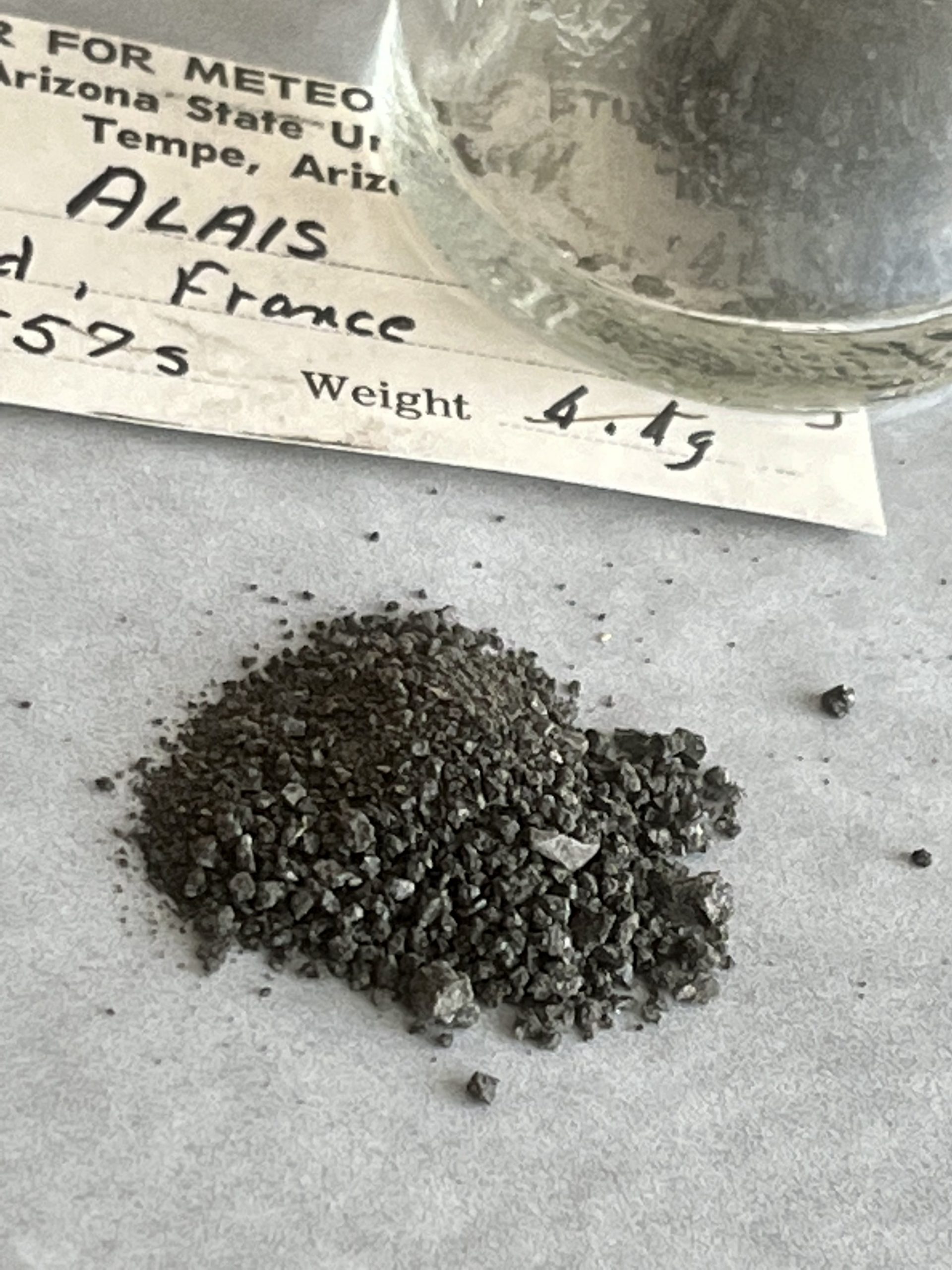Alais
Alais is a carbonaceous chondrite that fell in southern France in 1806. Alais was the first recognized carbonaceous chondrite, and occurred just 3 years after the historic fall at L’Aigle convinced the scientific community that meteorites could, indeed, fall to Earth.
On the late afternoon of March 15, 1806, residents of the rural communities of Castelnau-Valence and Saint-Etienne were surprised by 2 thunderous detonations. Coming, as this did, a short 3 months after the Battle of Austerlitz (a decisive battle of the Napoleonic Wars), witnesses’ first thoughts were likely of canon fire, not meteorites. Two small black stones were recovered, with a combined mass of approximately 13 lb, of which only a small fraction still exists today.

Alais is a CI (Ivuna chemical group) carbonaceous chondrite; CI meteorites are distinguished by the complete absence of refractory inclusions and chondrules, as well as a high degree of hydration. Since the fall of the Alais meteorite over 200 years ago, only 8 more CI meteorites have been identified, including 4 Antarctic meteorites and 4 observed falls. See details on all 9 Ivuna group meteorites, here.
On March 15, 1806, at 5.30 p.m., two detonations a few seconds apart were heard near the city of Alès. They were followed by a rumble that lasted for ten to twelve minutes. A shepherd named Eglon, who kept his flock in Bouquet and who by chance had his eyes turned to the sky on the north side, saw a luminous cloud a little before the detonations, which dissipated it. Two meteorites fell that day in Saint-Etienne-de-l'Olm and in Castenau-Valence, two villages a little less than eight km apart. Two local scientists living in Alès went to the two places to collect testimonials. In Saint-Etienne-de-l'Olm, they met a family of farmers, who had heard the detonations and rumblings. Trying to see where the noises came from, they saw a blackish mass arriving from the north, which passed over their heads and fell into a field of arable land near the village. The stone broke on impact. All people present took pieces of the meteorite; they estimated the initial mass of the meteorite fragments to be 4 kg. Then, the two scientists went to Castelnau-Valence where they met four eyewitnesses of the fall. The circumstances were the same as in Saint-Etienne-de-l'Olm: detonations, rumblings and a black mass which came from the north. The meteorite fell 25 paces from a man. It broke into three fragments on impact, which the people present shared. The mass of the stone was estimated at 2 kg.
French chemist Louis Jacques Thénard determined in 1806 that the Alais meteorite contained approximately 2.5 wt% carbon and 9 wt% magnesium, as well as sulphur, manganese oxide, iron oxide, nickel oxide, and silica.
Alais was the earliest known meteorite of the class we call carbonaceous chondrites (despite their general lack of chondrules). In 1834 the distinguished Swedish chemist Jöns Jacob Berzelius (1779—1848) observed that Alais, unlike other stony meteorites, consisted mainly of clay minerals (Berzelius 1833). When he first detected water in it, he was inclined to throw out the sample because water was unknown in meteorites. On further examination, Berzelius concluded the water was indigenous.
